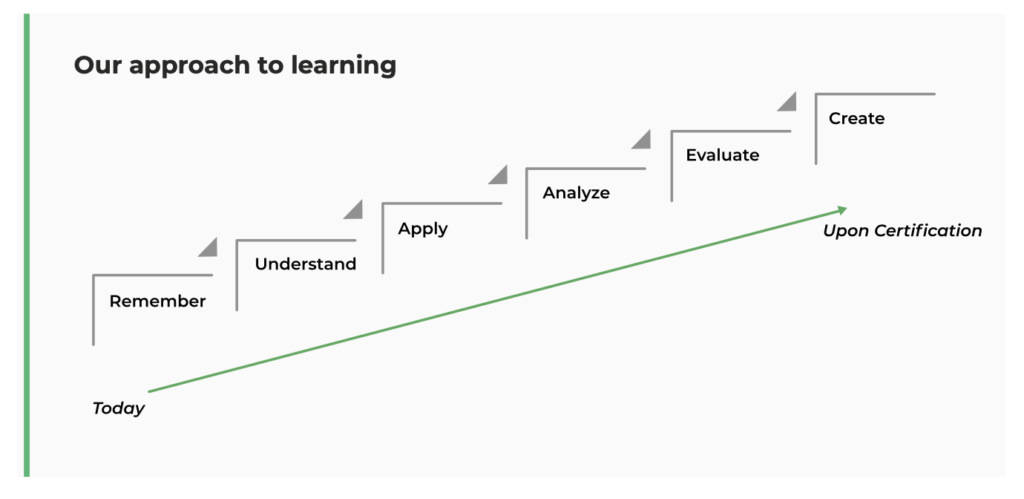Many well-intended professionals expect and hope to be provided a distinct list of poses for cancer patients and survivors as part of an Oncology Yoga training. This request is understandable in our world of ‘Top 10 This or That’ headline world, but the concept itself is flawed.
Oncology Yoga cannot be codified, as the needs of cancer patients vary dramatically based on many factors, including those that have nothing to do with the cancer itself. Our training approach helps yoga professionals to refine their skills to evaluate each and every person who comes for help, and that evaluation then ensures a teacher is able to provide a safe and effective yoga practice to support their needs.
To do this, we use various tools to refine an evolution into an Oncology Yoga Professional.
1) Blooms Taxonomy
Throughout our training programs, we will use various learning styles and engagement tools to ensure comprehension. Some are preemptive (before anything on the subject has been shared) or repetitive with different context or scope. The goal is to ensure comprehension and foster critical thinking. These are required skills to create a safe and effective Oncology Yoga practice for each and every individual that comes to a teacher for help.

2. The Socratic Method

Throughout our training programs, we often ask you questions. Tons of them! In worksheets, in quizzes, in webinars and beyond.
Sometimes we ask questions about information recently covered or reviewed. Other times, we will ask questions prior to teaching that specific information. This is deliberate to foster creative and critical thinking.
It is a method that is proven to deepen understanding and ensures you are able to apply all the information and concepts provided in this extensive training.
